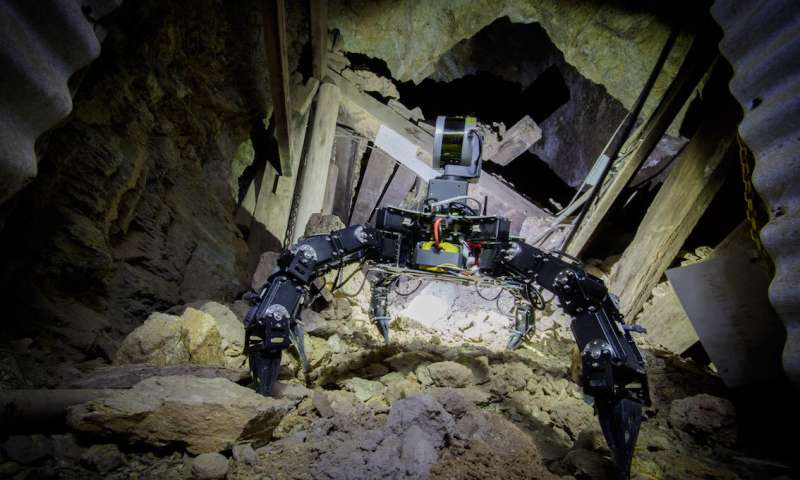A model for posture adaptation of legged robots while navigating confined spaces
A model for posture adaptation of legged robots while navigating confined spaces
In a interview to Ingrid Fadelli from Tech Xplore, Dr Navinda Kottege, the Robotics and Autonomous System Group’s Dynamic Platforms Team Leader talks about how multi-legged robots are capable of navigating a variety of complex and unstructured terrains.

Credit: Kottege et al.
[…] “These multi-legged robots have many degrees of freedom (e.g., Weaver has 30 joints) allowing them to have many different postures when they walk. When we deployed our robots in complex confined environments such as underground mines, ceiling cavities or underfloor areas, we realised that they need to change their leg and body configuration (i.e. posture) to squeeze through narrow gaps, walk over high obstacles or crawl under low overhangs. This requirement is what prompted this piece of research.”
[…] The researchers implemented and evaluated their proposed method both in simulations and on CSIRO’s hexapod robot Weaver, which is 33 centimeters tall and 82 centimeters wide, when walking normally. They were able to attain navigation under 25 centimeters of overhanging obstacles, through 70 centimeters-wide gaps and over 22 centimeters-high obstacles, in both artificial testing spaces and realistic environments, such as a subterranean mining tunnel. In the future, their model could be applied to legged robots that need to operate in mines, construction sites, damaged buildings, and other challenging environments.
Read the full story here.
